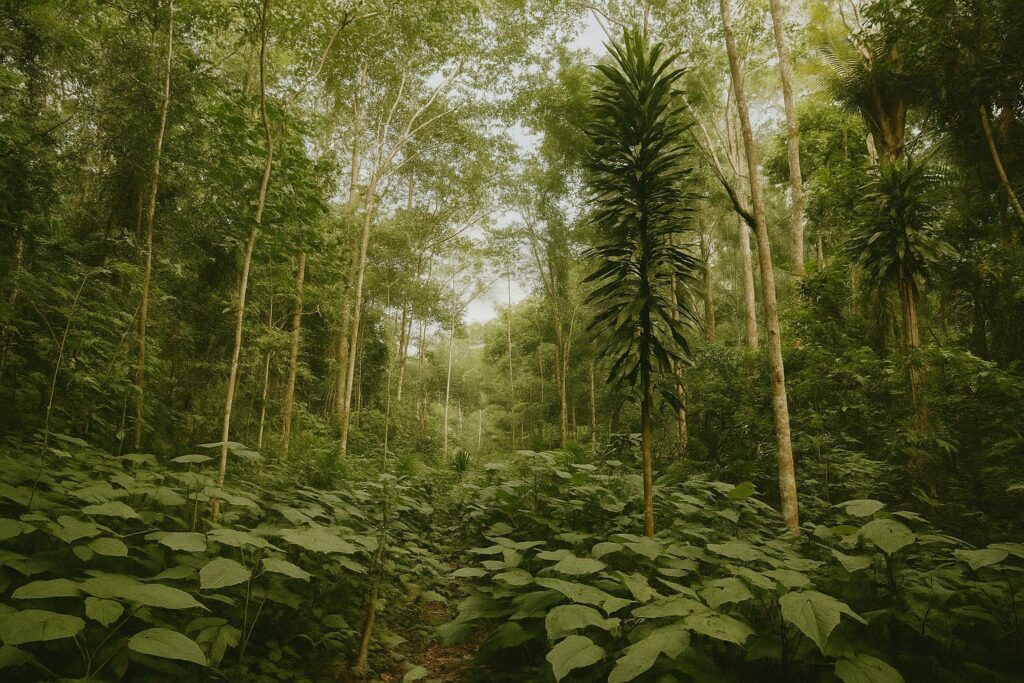Cartography of abundance and neglect
Satellite imagery of the Congo Basin still evokes Joseph Conrad’s fabled green heart of Africa, yet the statistical portrait sketched by the CIA World Factbook, the World Bank and the African Development Bank reveals a state that has the footprint of a middle-income exporter and the development indicators of a low-income agrarian society. Stretching over 342,000 square kilometres and dotted by a mere 6.1 million inhabitants, the Republic of the Congo sits on a coastline that grants it maritime access few landlocked neighbours enjoy, but the port of Pointe-Noire struggles with chronic congestion (World Bank, 2024). More than sixty per cent of the population clusters along the Brazzaville-Pointe-Noire corridor, leaving wide forested swathes effectively ungoverned.
Demography: youthful pulse and social stress
The median age stands at just 19.2 years, and the dependency ratio—calculated by the UN Department of Economic and Social Affairs—hovers above 80 %. Such a youthful pyramid offers a potential dividend, yet current education spending stagnates below two per cent of GDP, a level UNICEF classifies as ‘critical under-investment’. Life expectancy, placed by the Factbook at 64 years, remains well below the continental average despite marked progress in maternal mortality. Officials in Brazzaville concede privately that the post-COVID fiscal squeeze has delayed a long-promised overhaul of primary health-care facilities. As one senior planner at the Ministry of Planning told this journal, “Our demographic promise could turn to pressure if job creation keeps limping.”
Economic labyrinth: oil riches under fiscal strain
Hydrocarbons account for nearly 80 % of export earnings, positioning the country, according to OPEC data, as Sub-Saharan Africa’s third-largest oil producer per capita. Growth rebounded to 3.5 % in 2023, fuelled by the Moho-Nord offshore field. Yet public debt remains above 87 % of GDP after a restructuring agreement with China Exim Bank in 2021, and the IMF’s latest Article IV report classifies the situation as ‘high risk of debt distress’ (IMF, 2023). Diversification plans—from timber processing to special economic zones around Oyo—are celebrated in official communiqués but advance haltingly. Foreign investors continue to cite opaque procurement rules and an unpredictable judiciary. Transparency International’s 2023 Corruption Perceptions Index ranks Congo 162nd, a placement that chills boardrooms in Paris and Singapore alike.
Energy chessboard and climate diplomacy
If fossil dependence defines the fiscal outlook, hydropower and carbon-credit schemes increasingly dominate foreign talking points. The national electrification rate nudged past 50 % in 2022, yet rural coverage lingers below 15 %. Projects on the Kouilou and Sangha rivers remain stalled pending financing guarantees. Meanwhile, the government positions its vast peatlands as a global carbon sink. Speaking at the Nairobi Africa Climate Summit, Environment Minister Arlette Soudan-Nonault claimed that “protecting our forests is worth more than extracting another barrel” — a line that resonated with EU negotiators exploring a possible REDD+ purchase agreement. Critics at Congolese civil-society network CADO argue that recent logging concessions contradict such rhetoric, pointing to satellite-verified clear-cuts in the Likouala province.
Institutional dynamics and regional posture
President Denis Sassou-Nguesso, in power for a cumulative 39 years, presides over what the African Peer Review Mechanism calls a “hyper-presidential architecture”. Parliamentary elections in 2022 reconfirmed the Parti Congolais du Travail’s dominance, though turnout in Brazzaville’s third district fell below 25 %. While the AU praised the ‘calm atmosphere’, EU observers were not invited. Regionally, Brazzaville cultivates a niche diplomacy as mediator; it hosted quiet talks between Central African Republic factions in March 2024 and routinely offers its territory for discreet regional summits. Such gestures burnish Congo’s international profile, yet domestic opposition voices lament that mediation prestige does little to reform domestic governance.
Security calculus and transnational pressures
The armed forces number roughly 10,000 personnel, modest by regional standards, but the budget has risen since piracy incidents expanded westward from the Niger Delta into Congolese waters. Joint patrols with Angola testify to pragmatic cooperation. On land, the humanitarian cost of the Pool insurgency lingers; over 100,000 internally displaced persons have returned, yet UNHCR still registers pockets of displacement. Human-trafficking rings exploiting the timber corridor to Cameroon have drawn U.S. Tier 2 watch-list scrutiny. Officials recognise that porous borders undermine both human security and fiscal revenues, especially as artisanal gold and coltan flows circumvent customs.
Strategic outlook for policymakers
For diplomats and investors alike, Congo-Brazzaville offers a textbook study in converging risks and opportunities. A favourable commodity cycle could ease debt service, but any oil-price dip would rapidly expose fiscal fragility. The demographic surge demands accelerated job creation, or social tensions may erase the region’s recent security gains. Energy transformation pledges attract climate finance, yet only verifiable forest-governance reforms will unlock sizable carbon payments. External partners pondering engagement should therefore prioritise budget transparency, vocational training and digital monitoring of logging leases. Absent such guardrails, the republic’s paradox—resource abundance engulfed by governance deficits—may endure long after the current oil wells run dry.

